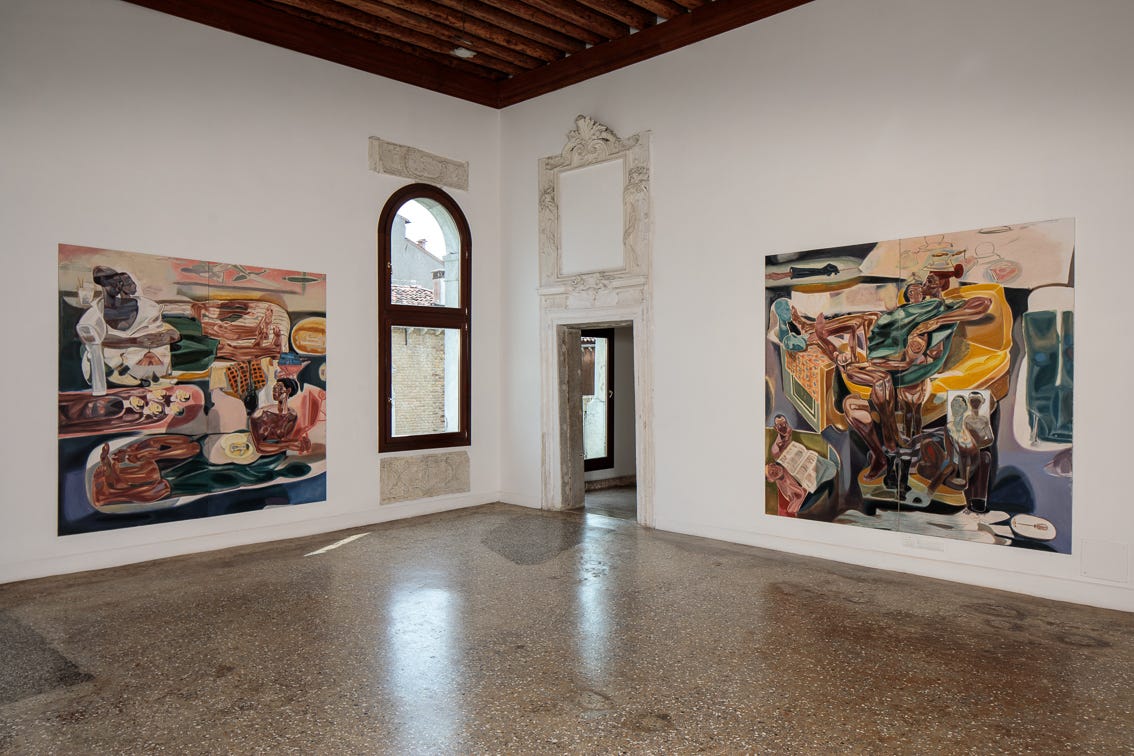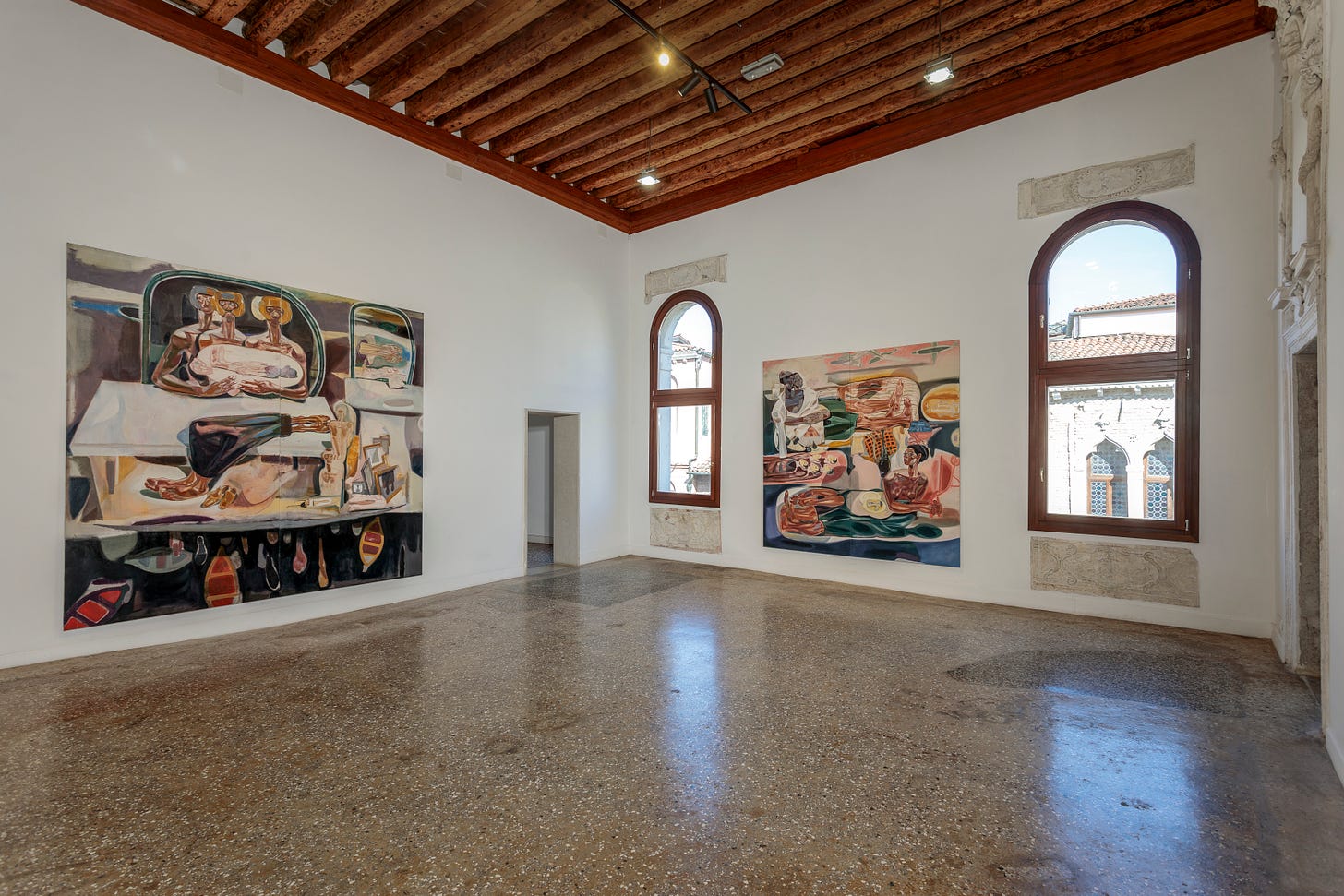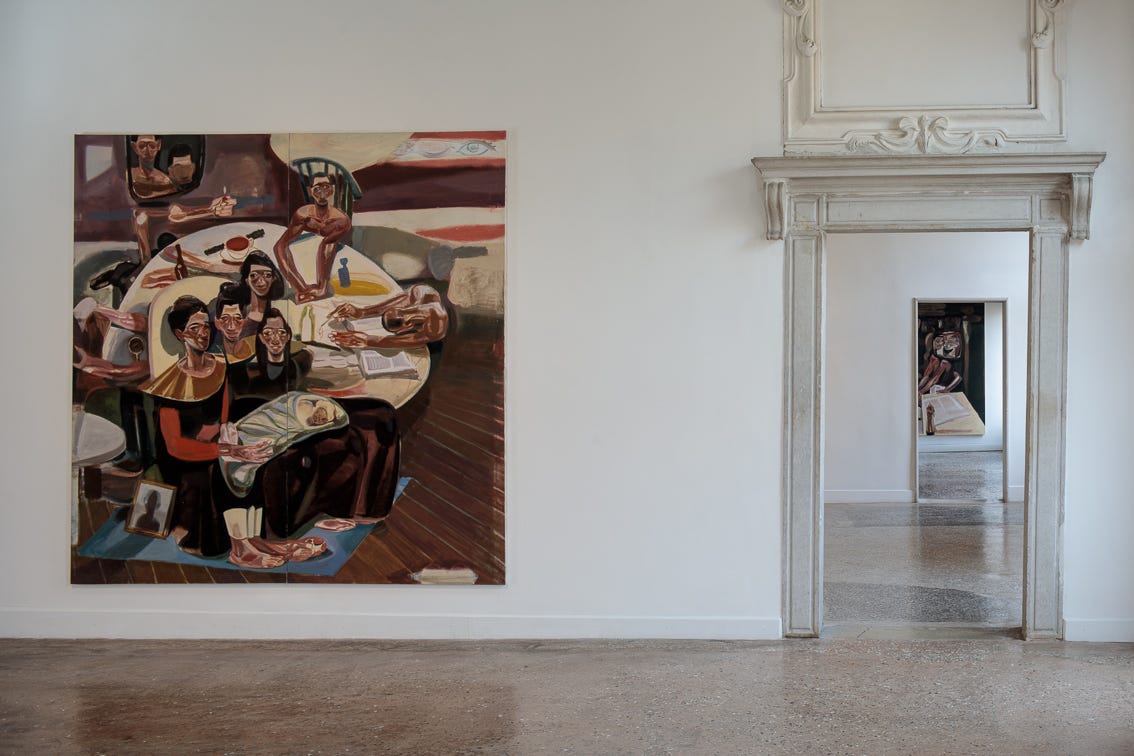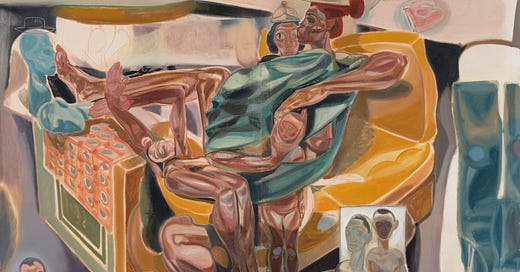The Hand of God: Tesfaye Urgessa envisions Ethiopia for its National Pavilion
Ethiopia inaugurates its first participation at the Venice Biennale with a reflection on migratory experiences I can relate to with my own roots.
On a panel discussion about classism and working conditions in the arts and humanities last year, part of the conversation was how many immigrants experience a CV downgrade arriving in Western countries: Education is not accredited, work experience is discarded, languages spoken are deemed irrelevant. I remember my time working in a warehouse during covid. My colleagues were immigrants from the Soviet Union, many of them Russian Germans just like my parents. “I was an army engineer back home”, one colleague who now packs paletts told me. Another colleague was a mathematician once.
Tesfaye (Millennial, Ethiopian) lived in Germany for thirteen years while studying arts in Stuttgart and working as a translator in immigration camps. Maybe this is why I feel so connected to Tesfaye’s paintings. They look into the past and the future, the utopias promised and the realities faced.

The Conditions of Realism
Tesfaye paints mostly large-scale compositions of people at tables or seated in front of a dawning horizon. He forms out the bodies to the muscle, but leaves them unfinished here and there, exposing the canvas in between geometric, unblended patches of painted flesh. This treatment of the body through dry brushwork reminds me of Francis Bacon (1909-92, British), a representative of the London School of Painters that Tesfaye looks a lot to according to the press release.
While Francis reveales violence through his use of paint, Tesfaye does so through his motives. In Lineage Frost 2 (2023), flames hovering above bottles in the upper right corner make me think of molotov cocktails. Rifles at the painting edge point at the central scene. Bodies are often chopped into limbs, arms and hands peeking out of blankets or, worse, bags. Martyrs in a church or corpses at a morgue? The sky in many backgrounds is filled with both clouds and airplanes. Commercial airlines or fighter jets?
The attention to the body and muscularity brought to mind the idealized bodies of Socialist Realism. His painting Mother (2023) highlighting the strength and endurance of the mother who carries her two children on the back while bending as if preparing for the race track could be easily a mural or a mosaic in a Soviet sports facility.
A woman holding a wheelbarrow in her hands in In the market of life, her stories will unfold (2023) seems to point to the value and idealization of work similarly to the hammer and sickle of Socialist iconography. Idealized maybe, because the wheelbarrow is much smaller than the woman, clean, untouched by actual sweat and labor. Behind the woman, yet another smaller wheelbarrow carries blue faces? Masks? Corpses? Ambiguous, like most things in Tesfaye’s paintings. Or is the wheelbarrow right on her head? I can’t tell. Space isn’t tied to physical laws in Tesfaye’s work. Perspectives and POVs overlap.
Doing my research, I stumbled upon the catalog mentioning that many professors teaching at the Ale School of Art and Design at Addis Ababa University where Tesfaye studied happened to study in Russia and taught Russian Realism (cat. p.14). Historically, both Slavic and Ethiopian art history share similar roots through Christian Orthodox art. In the Soviet Union, orthodox iconography was revived through adaptation for Socialist ideology.

Orthodoxy
Many Ethiopian artists refer to orthodox visual tradition. I am reminded of Merikokeb Bernahu (Gen X, Ethiopian) who exhibited at the Venice Biennale two years earlier. Even in abstraction she draws on Christian orthodox iconography through elongated forms recalling saints and circles alluding to halos. When the light shines through the big windows at Palazzo Bolani, Tesfaye’s painted surfaces turn into goldleaf, be it coincidence or not. Another recurring and possibly theological element in his work might be the hand.
The Hand of God or Manus Dei in Latin is the representation of God in Christian art. Given that God is the holiest concept you can depict, you can’t really paint a person. The hand refers to God’s power. With a simple gesture, he commands the universe and all creation. An angular arm comes forth from the light in the upper right corner of Eyes in Flux I (2023), drawing on the table that takes up most of the painting. A writing hand appears from beyond the picture plane in No country for young men, 31 (2024) and in Spring or fall (2024), filling the pages of a book as if chronicling the lives of those in front of him. The hand belongs to the creator, be it God or the artist.

Not only the hand intruding into the painted world suggests a presence beyond the canvas. Standing in front of Lineage Frost (2023), a painting of two seated couples, my shadow artificially extends into their world. These shadows appear in several works. An intriguing case is The Guardians (2024), where the darkness of a person beyond the canvas falls on a painted mirror in the lower left corner, turning it into a picture frame.
At the Crossing of Timelines
Beyond references to Christian theology and Socialist Realism, there’s something archaic to Tesfaye’s twisted bodies. Something that reminds me of Ancient Egyptian sculptures and reliefs. And just when I believe to be in the past, Chinese Food and Nike running shoes bring me back to the present.
Real bodies sit next to picture frames and memories. Trauma and pain nestle in between the familiarity of mugs, flat irons, and living room furniture. Every painting might be the story of a family or a person. Entangled, conflictive, each story begins with the same thought: Where does one even start?
Tesfaye Urgessa: Prejudice and Belonging, through November 24, 2024, at Palazzo Bolani, Venice.
Palazzo Bolani
Castello 3647
30122, Venice
Website
Instagram: @tesfayeurgessa
Hands down, this is undeniably the best National Pavilion out in town (rhyme not intended). If you liked this review, please let me know through a like. As a subscriber to my newsletter you can also share your thoughts in the comments down below. And don’t forget to share this one, I appreciate that a lot!
See you soon!!!
Jennifer
The Gen Z Art Critic





